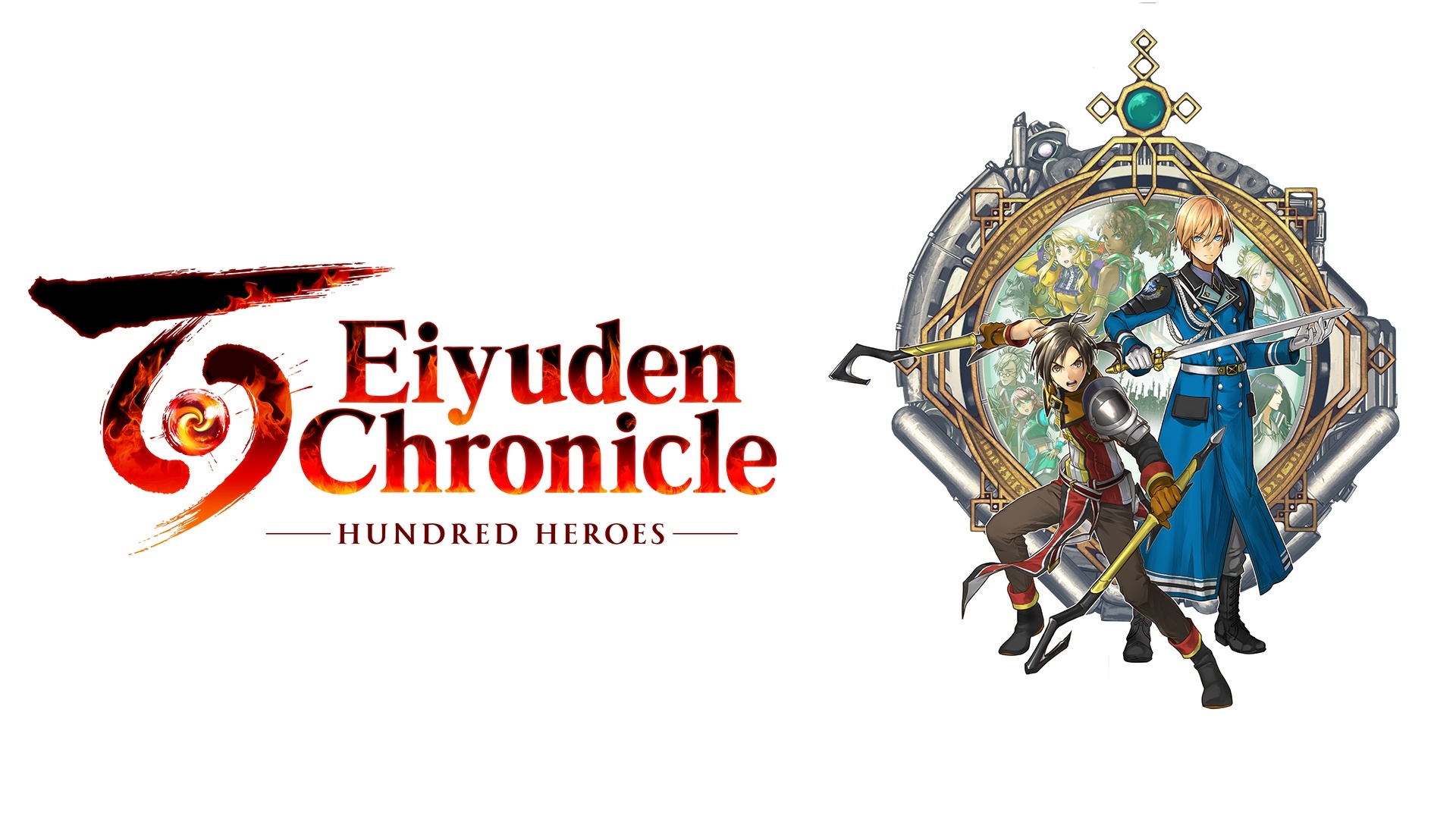Eiyuden Chronicle: Hundred Heroes is the spiritual successor to Konami’s celebrated Suikoden series, a beloved JRPG franchise spanning over seven entries, including five mainline games and two spin-offs (one never localized in the West). Developed by Rabbit and Bear Studios, the team aimed to create a love letter to the JRPG genre, filled with the iconic quirks and design philosophies one would expect from a mid-to-late 90s JRPG.
Funded as Kickstarter’s #1 project of 2020, Eiyuden Chronicle: Hundred Heroes entered development with immense hype and expectations. The goal was to revive an era of JRPG greatness many believed had passed. With the passing of series creator Yoshitaka Murayama, many wondered if the game could live up to its lofty ambitions and serve as a fitting final legacy.
Is Eiyuden Chronicle: Hundred Heroes a worthy successor to Suikoden? Does it honor Murayama’s vision? Or is this a Kickstarter dud? Find out in our Eiyuden Chronicle: Hundred Heroes review!
This is a review coupled with a supplemental video review. You can watch the video review or read the full review of the below:
Eiyuden Chronicle: Hundred Heroes
Developer: Rabbit & Bear Studios
Publisher: 505 Games
Platforms: Windows PC, Nintendo Switch, Xbox One, Xbox Series X|S, PlayStation 4, PlayStation 5 (reviewed)
Release Date: April 23, 2024
Price: $49.99 USD
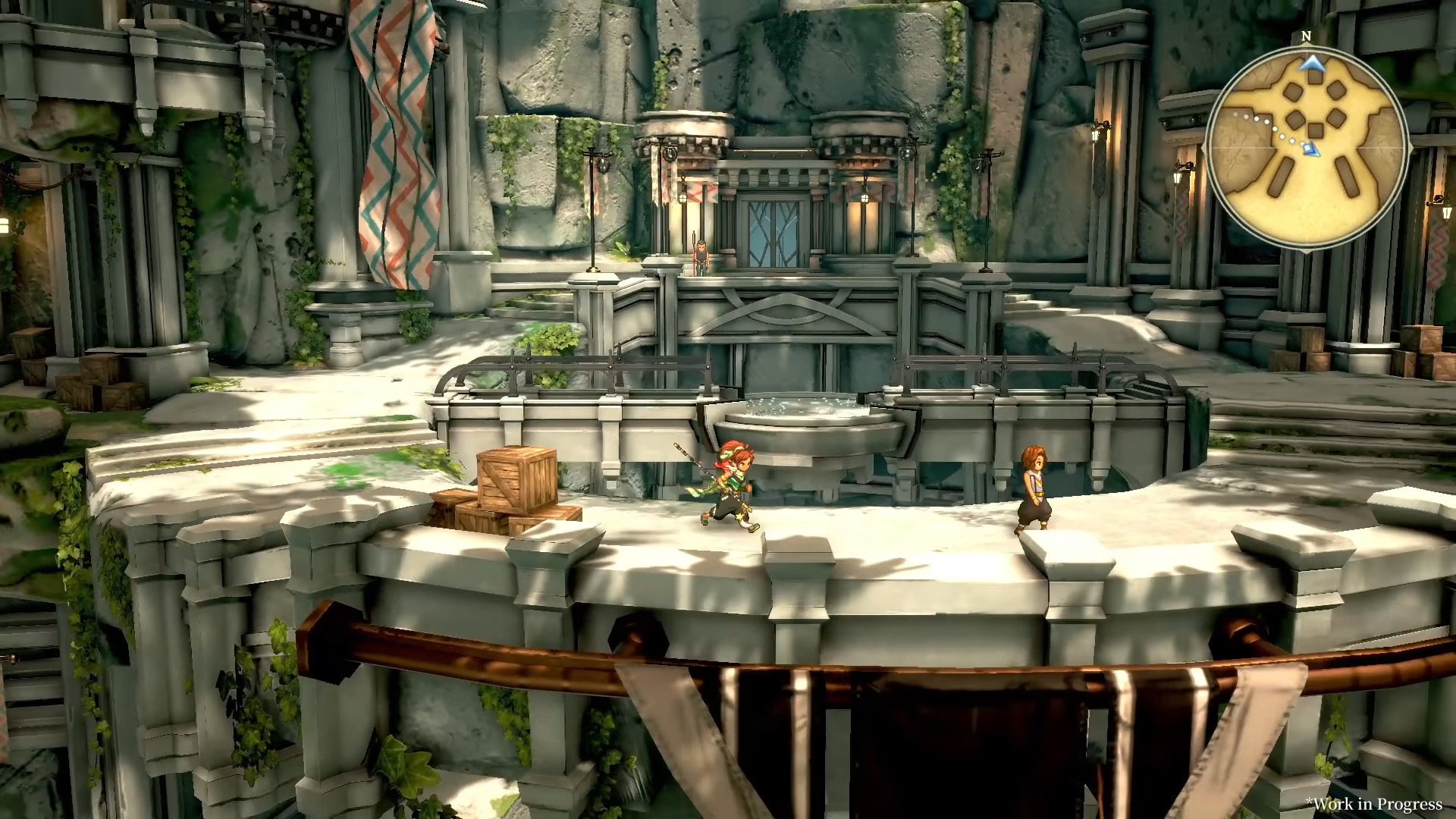
The first JRPG I ever experienced was the original Suikoden. A friend came over and spontaneously popped it into my PlayStation. I was only eight years old and had no point of reference to compare this game to, other than possibly Super Mario RPG on the SNES or the original Pokemon.
Once the game began, my mind couldn’t fathom how mind-blowing it was to see all these different, uniquely designed heroes fighting with swords, staves, axes, and magic. Having a party of six characters was the most impressive aspect for me. Once I saw a battle play out, it immediately hooked me on the possibilities of what a turn-based RPG could be.
The character sprite work was charming, and it was fun to see how their animations played out, especially during a “unite attack”. JRPGs became my favorite genre from that moment on. This path has led me to explain my time and experience with the game that aims to be its successor.
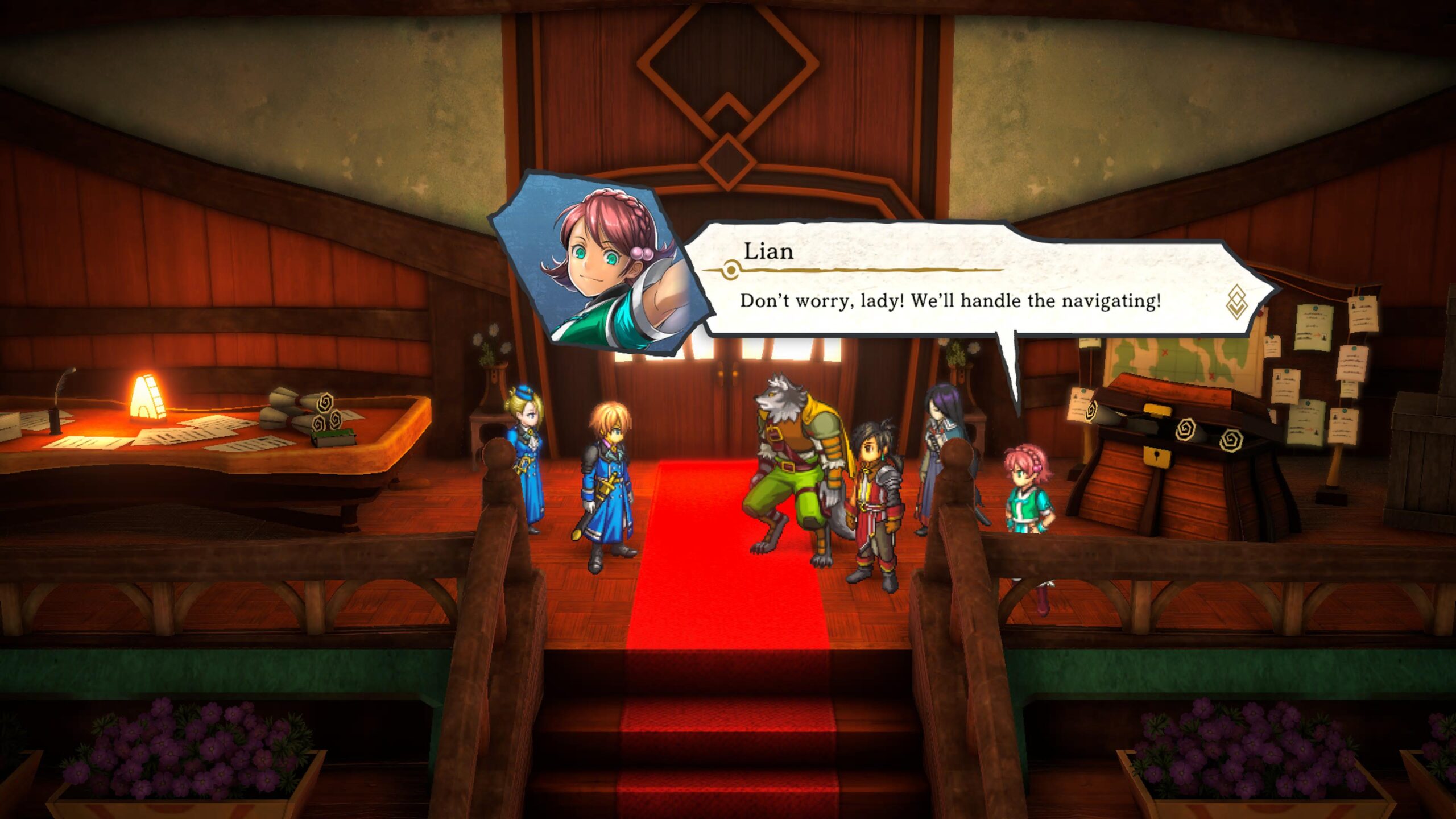
As the game opens up in the first town, a symbolic scene unfolds: a large bird attempts to capture a smaller one. This sets the player on notice that no challenge is too big, even when hope seems lost. It foreshadows the idea that even the underdog can prevail.
We then meet Nowa, a young and eager fighter, who wields two uniquely shaped swords that resemble hooks. Nowa’s journey immediately “hooks” the player’s attention as he wastes no time joining “the watch,” a sort of city mercenary guild that helps people in need with small tasks, typically involving monster culling or escorting travelers.
While not the most inspiring way to begin a JRPG protagonist’s story, it serves as a stepping stone for Nowa to eventually acquire a town or castle, allowing him to manage the many recruits that are central to the expected Suikoden-like experience.
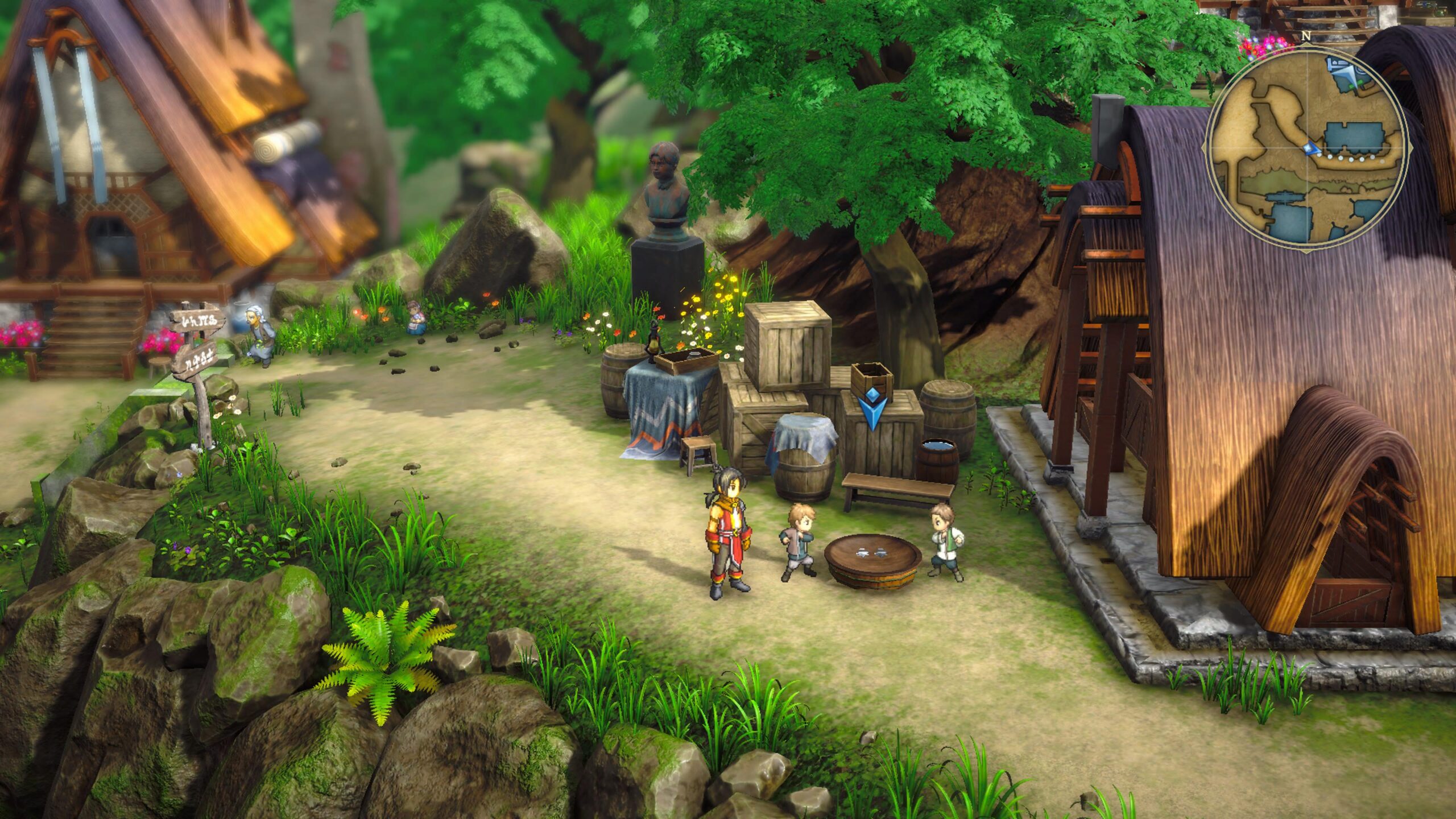
Enlisted in the watch, Nowa’s first mission has him meet Seign Kessling of the imperial army. This seemingly small escort mission will soon explode into a quirky, character-filled adventure of discovery, liberation, and everything one would expect from a Suikoden-like game. Though the opening mission itself isn’t as intense as the series favorite Suikoden II, it sets the stage for the inevitable political turmoil to come
Commencing the first act, the player takes control of six heroes. While the number seems substantial, the combat options initially feel somewhat underwhelming. As the game progresses, new features are introduced, but none will be unfamiliar to Suikoden veterans.
The weapon upgrade system remains virtually identical: pay a small fee that increases with each subsequent upgrade. Higher upgrade caps become available in more towns as the story progresses, but reaching the highest cap requires special items similar to the hammer key items from Suikoden IV.
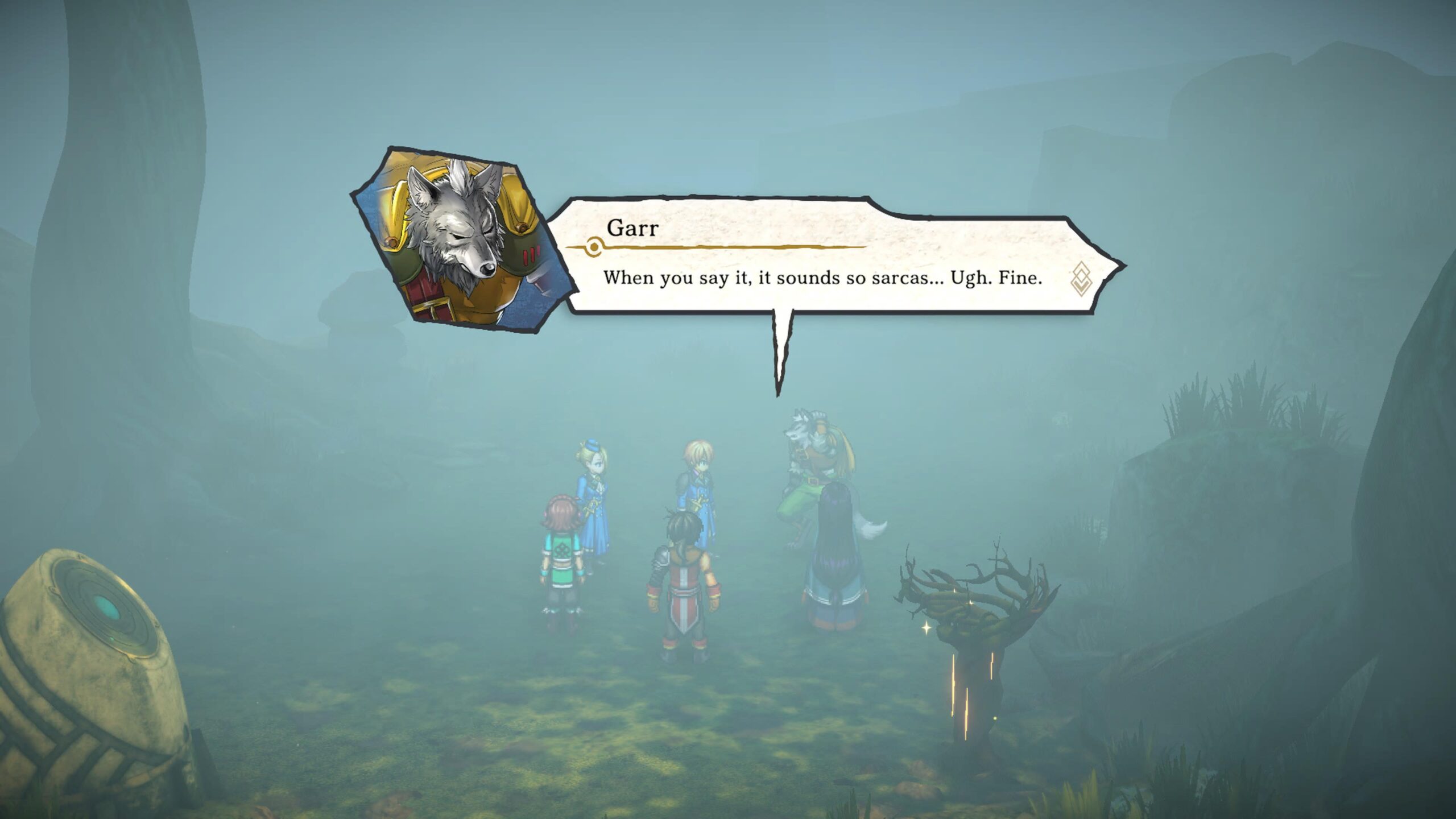
The rune system, now called the “rune/lens” system, feels like a welcome improvement. Each character has a unique Lens with multiple slots for a variety of rune categories. This allows for a more enjoyable tinkering experience when creating builds for the 100+ recruitable characters.
You can experiment with both the hard-coded runes some characters possess (like Nowa’s thrilling 8-fold attack rune Swinging Slash) and the many equippable ones. Unite Attacks also return, but unlike Suikoden III, they don’t upgrade to higher levels through repeated use.
A system I find myself wishing for in Eiyuden Chronicle is the skill proficiency system from Suikoden III. This extra build system would not only give players a better understanding of how characters operate but also what stats and combat capabilities to focus on. It would further enhance the micromanagement and theory-crafting aspects that JRPG fans love. While Eiyuden Chronicle lacks this feature, the improved rune system is a welcome addition compared to its predecessor.
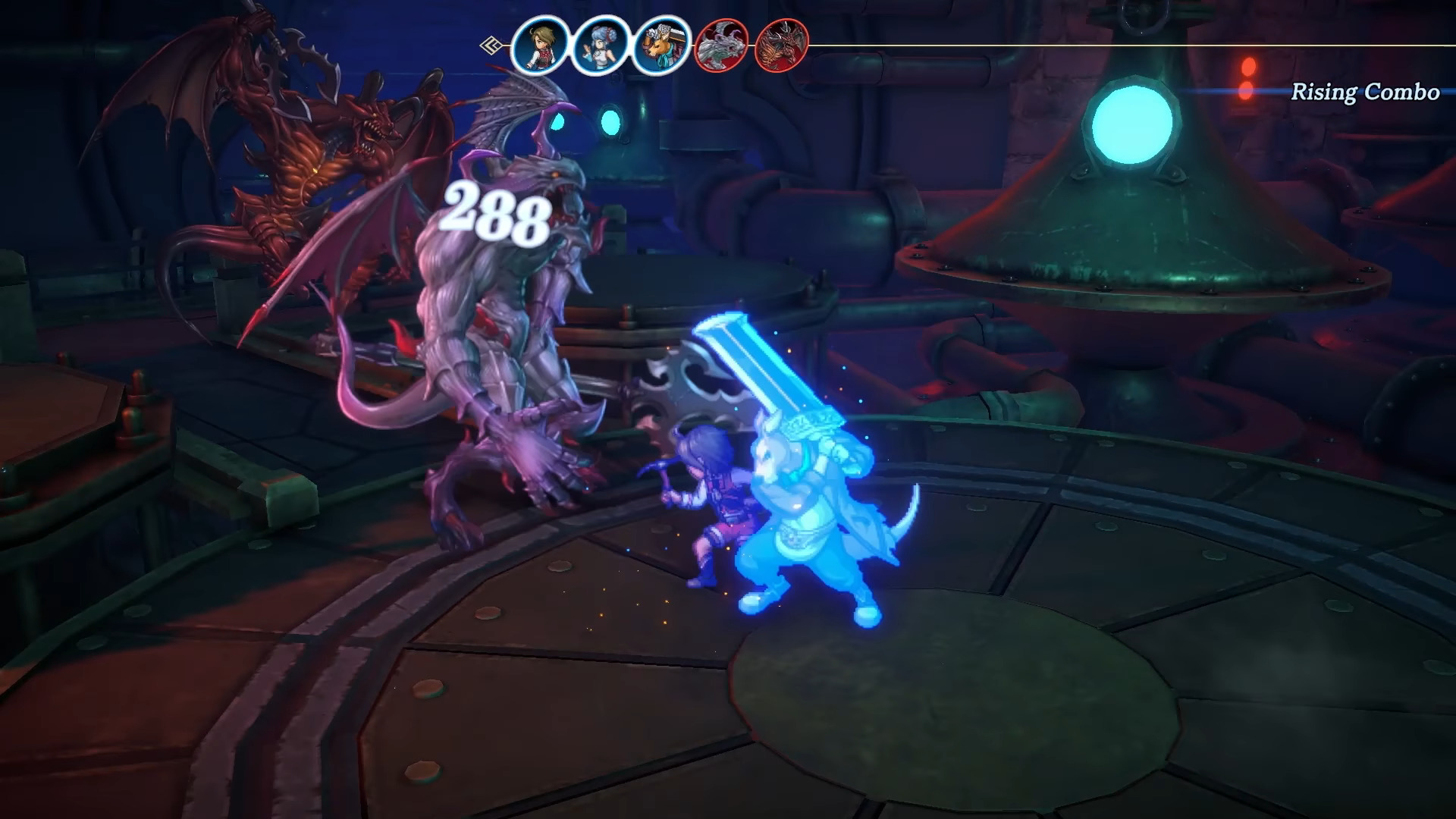
The combat system shares similarities, but with new additions that add variety to the battles. One such feature is the ironically named “gimmick” system. This system means that certain boss battles have a special command that can turn the tide in your favor, or against you if you’re not careful.
For example, one boss fight involves a giant crane that drops massive ball bearings on a third of your party. Failure to utilize the “gimmick” command effectively will cause the ball to fall and damage your heroes. However, with proper timing within the turn queue system, you can command the crane to move over the boss instead, causing them to take the damage.
Many bosses have a variation of this feature, but in some cases, the hints are unclear and can feel random. For instance, another boss encounter involves a magical beast that submerges into the sand, giving you a fifty-fifty chance of selecting the right spot to attack. There were no clear hints in this encounter. If there were, they were difficult to understand, resulting in a confusing experience with the gimmick mechanic. When the hints are clear, it’s very satisfying to outsmart the boss!
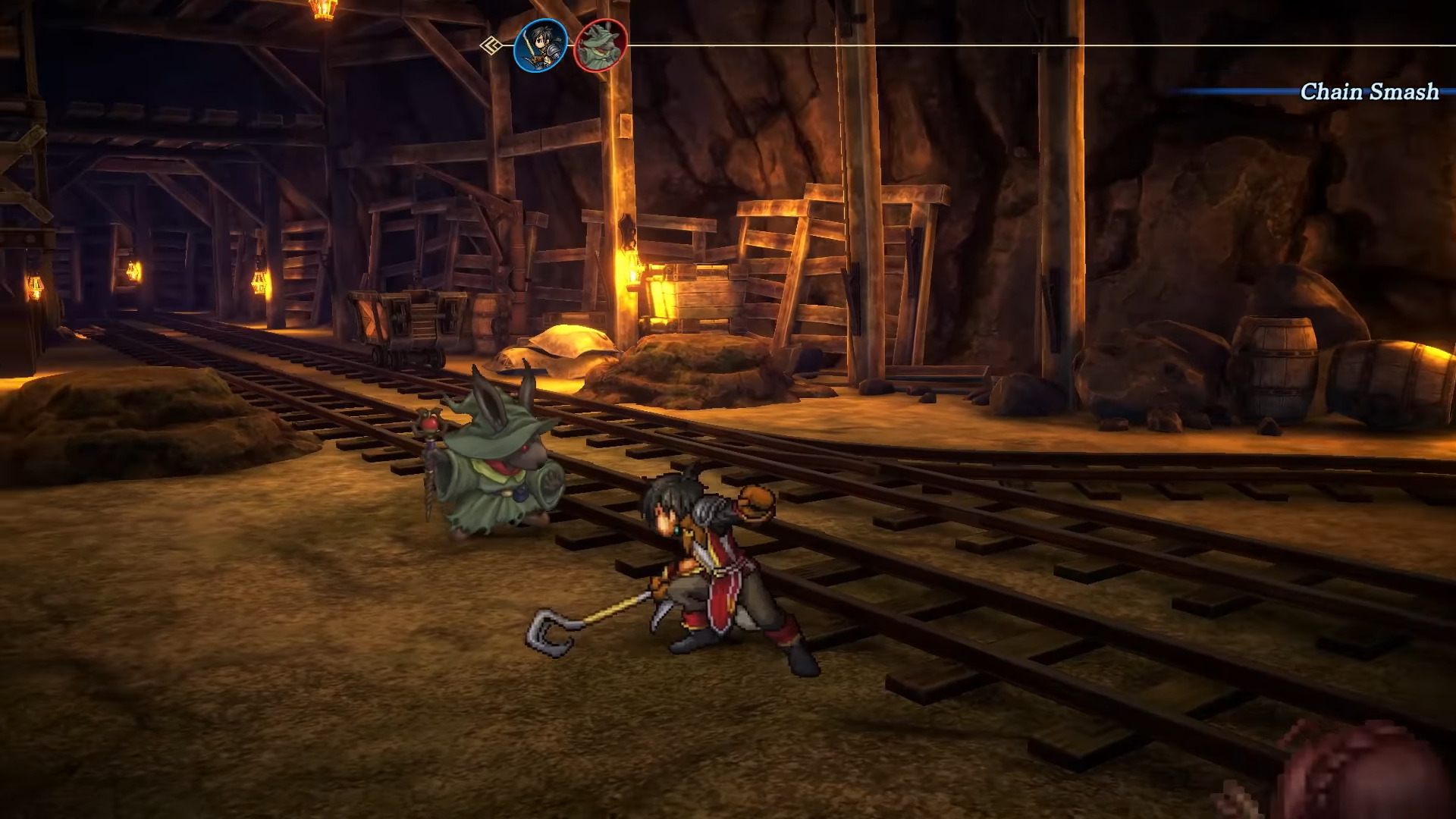
Shortly after the first mission, parting ways with Seign and hot-pants Hildi, the hero is given his first taste of freedom by exploring nearby towns, outdoor dungeons, and even fishing. Several characters can be recruited by completing various tasks scattered around the region.
Tasks range from interesting to rather mundane, with some being as uninspired as fetching five wild boars. It’s quite noticeable when the game puts effort into character recruitment compared to when it doesn’t. Some characters join the party after a cutscene, while others require an item, and some will have you complete an obligation for them in a dungeon.
A positive example is recruiting a young mage who prefers the term “magical girl.” This involves a unique boss encounter in one of the zones, utilizing her quirkiness with giant magic hammers summoned from magic tomes, referencing the game’s Gimmick system.
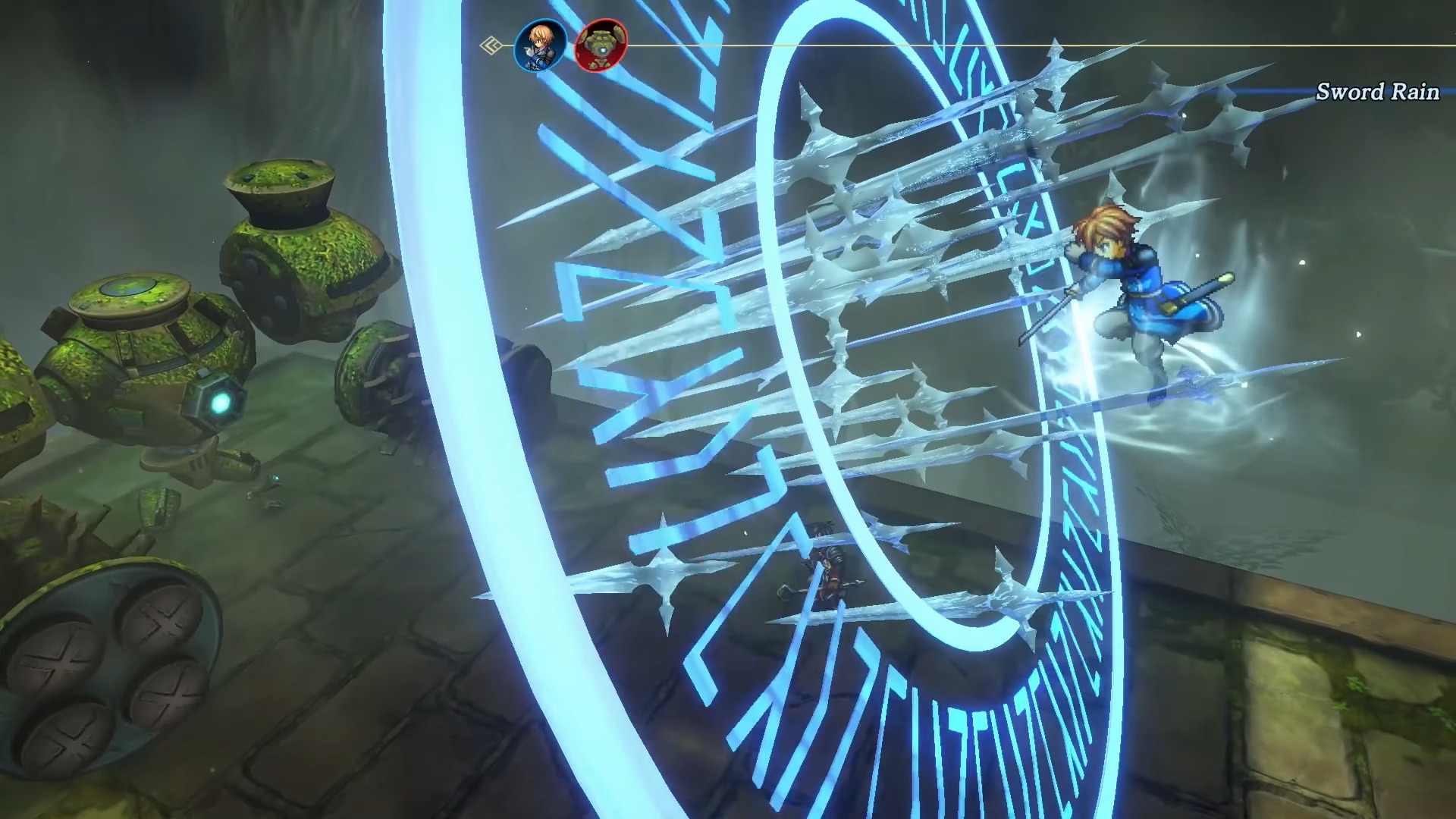
Another major addition to the combat system is the use of traditional MP instead of spell slots. This allows players to use any spell they like without being restricted to limited uses of their most powerful spells. However, as expected, stronger spells cost significantly more mana than weaker ones. Fortunately, mana points can be replenished with consumable items.
Arguably the most important addition to the combat system is SP, which addresses a critical issue from the previous game. Unite attacks and powerful rune abilities can no longer be spammed with impunity, and the dreaded “unbalanced” debuff that locked characters out for a turn is gone. Instead, SP is required to perform these powerful tandem actions, drawing from each participant’s own SP pool. This limits their use but makes them feel more strategic and valuable to implement at the right moment.
One of my favorite design aspects in Eiyuden Chronicle is the robust difficulty system you choose at the start. Similar to Dragon Quest XI‘s Draconian difficulty, Eiyuden Chronicle offers punishing modifiers like enemies not dropping currency, limited escaping, increased spell costs, and shop inflation. These are not recommended for beginners!
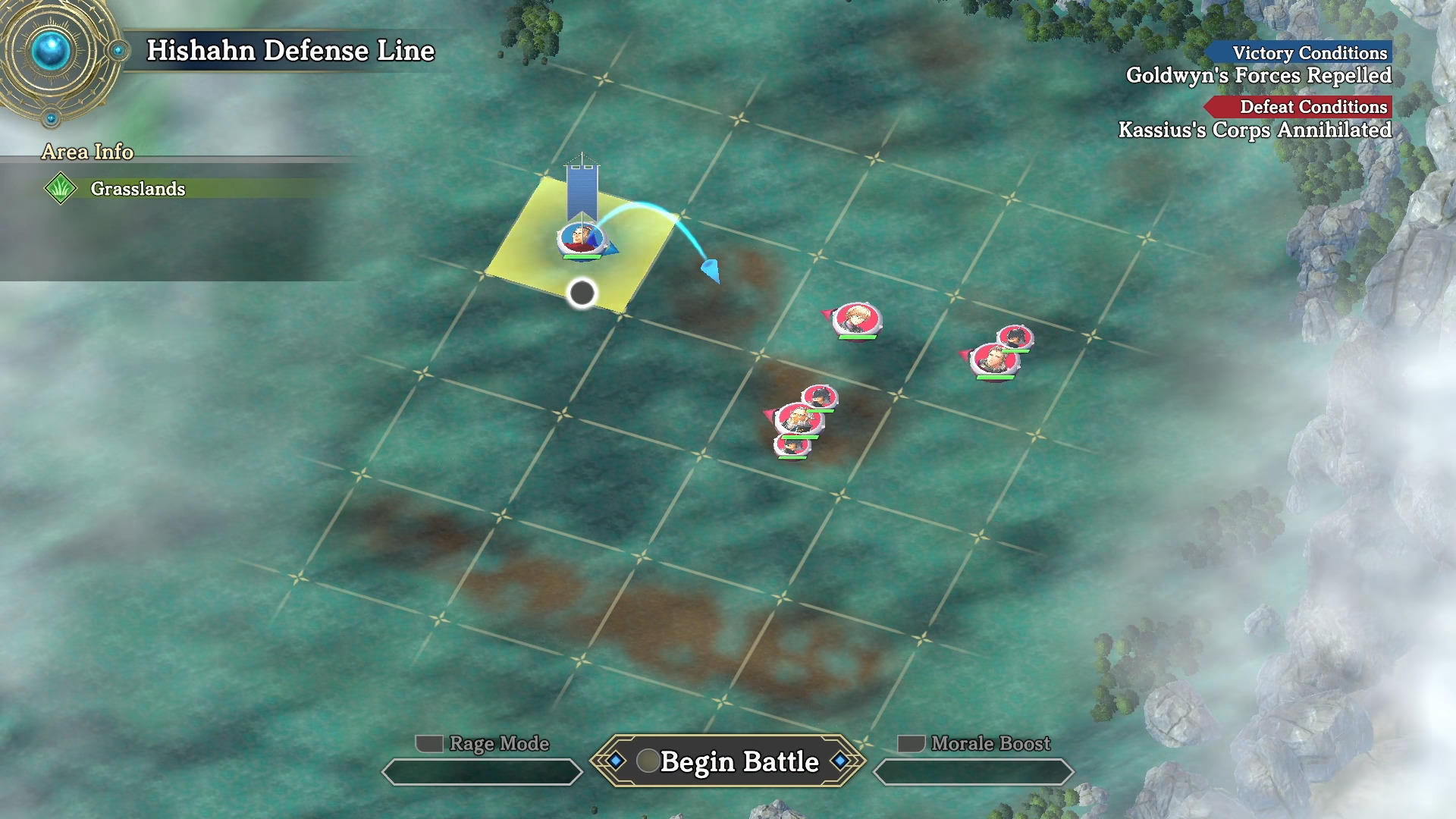
The game also offers Normal and Hard mode options. I chose Hard and stuck with it. What makes this system fantastic, is that if you try to lower the difficulty or turn off challenges, you can’t revert them. This should be the standard for games with difficulty sliders! It prevents players from easily weakening their challenge.
However, there’s a caveat. The game throws some very difficult boss fights at you while these challenges are active. Sometimes, you could get soft-locked – unable to return to a safe zone and change your party composition – before a particularly tough encounter. This situation forced me to lower the difficulty to Normal just to progress, shamefully stripping away my Hard difficulty badge.
The voice acting can be inconsistent, which isn’t uncommon for English performances in JRPGs. My experience with Eiyuden Chronicle‘s voice acting has been mostly positive. While some characters’ voices didn’t initially match their appearance in the artwork, they grew on me as I learned more about the characters. Seign Kesling’s voice is a good example of this.
Editor’s note: While the reviewer did not explicitly have any issues with the translations used in the localization, it’s important to note that there are some questionable comments made by characters that would never exist in this game world. One such example is the following: 
“Chud” is often a derogatory word used to criticize people who lean to the right politically in America, so it’s completely out of place in this Japanese-crafted world. We have updated the review to reflect this, however, because it did not impact the reviewer, the score remains untouched.

The music, while not something I’d actively listen to outside the game like the soundtracks for Final Fantasy Tactics or Fire Emblem, effectively serves its purpose of setting the mood. It isn’t memorable, but it also isn’t offensive either. It merely exists in a bland limbo.
The use of SP for special actions adds a layer of strategic depth, requiring careful resource management, especially in longer battles. For example, Nowa and Seign’s joint AoE attack requires SP from both characters, unlike Riou and Jowy’s similar unite attack in Suikoden II, which is free and can easily clear most regular enemies. This difference encourages more tactical use of abilities in Eiyuden Chronicle.
Mini-games are abundant in Eiyuden Chronicle: Hundred Heroes. While not as extensive as recent titles as seen in Like A Dragon: Infinite Wealth or Final Fantasy VII: Rebirth, there are still a handful to enjoy with various rewards. Most importantly for fishing enthusiasts, fishing is included!
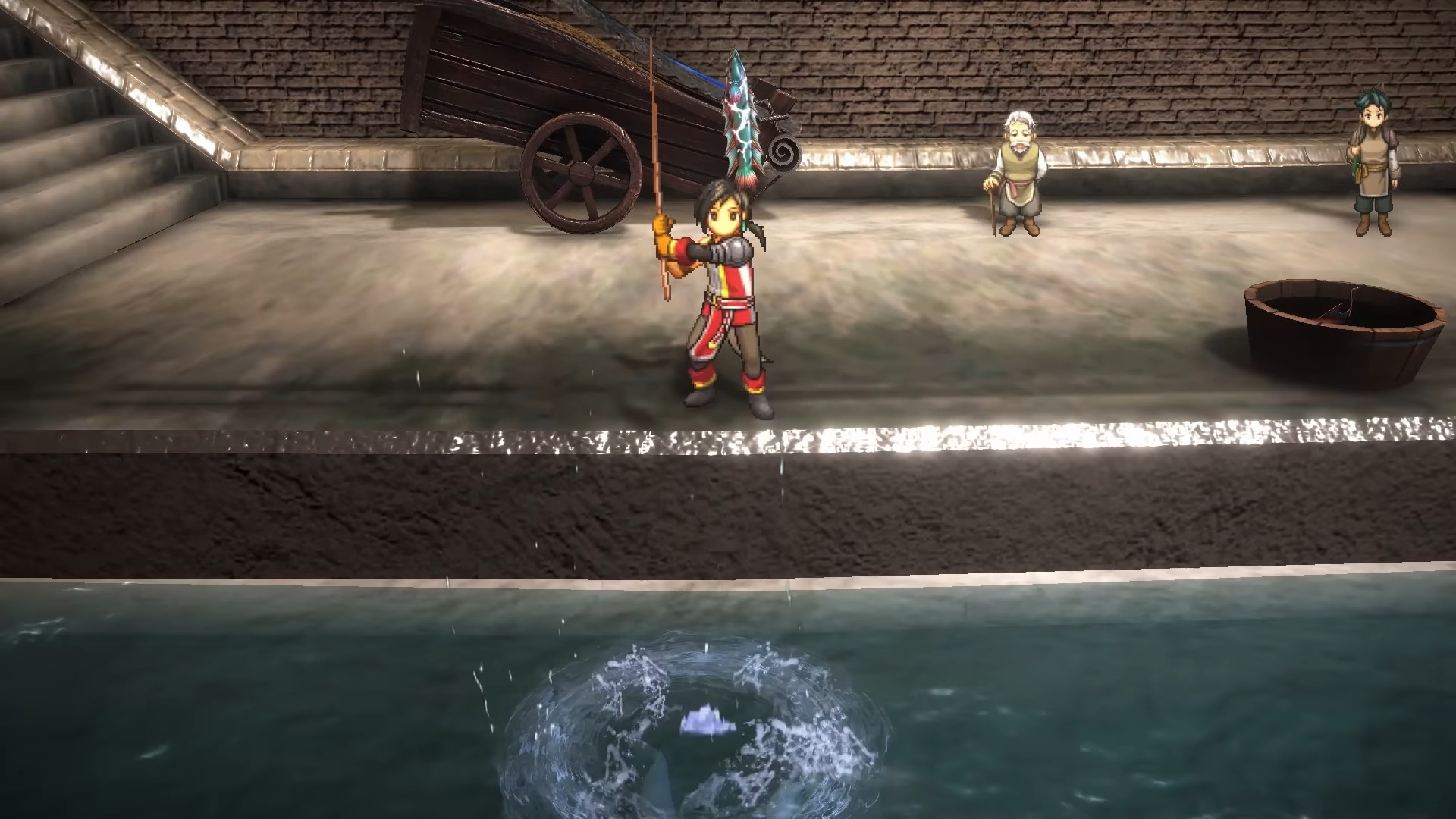
After receiving your first rod early on, you can search for docks scattered throughout the regions. Rod in hand, you can cast out into these reservoirs, potentially catching delicious creatures for town building, collection, or even a new recipe. After all, a great man once said; “JRPG needs fishing”.
Unlocking the castle/town building feature brings joy to Suikoden fans. This inclusion opens the game up, encouraging exploration of off-the-beaten-path zones to recruit potential heroes who will join your cause against oppressive imperials. These imperials seek control through war-minded innovations and cunning politics.
What separates this castle/town building from its predecessors is the architect’s building tree. This web-like roadmap visually shows players the heroes needed to construct various facilities like armories, logging farms, rune shops, and more. However, building these facilities requires not only vocational heroes but also various materials like logs, precious minerals, hunted meat, and fish.
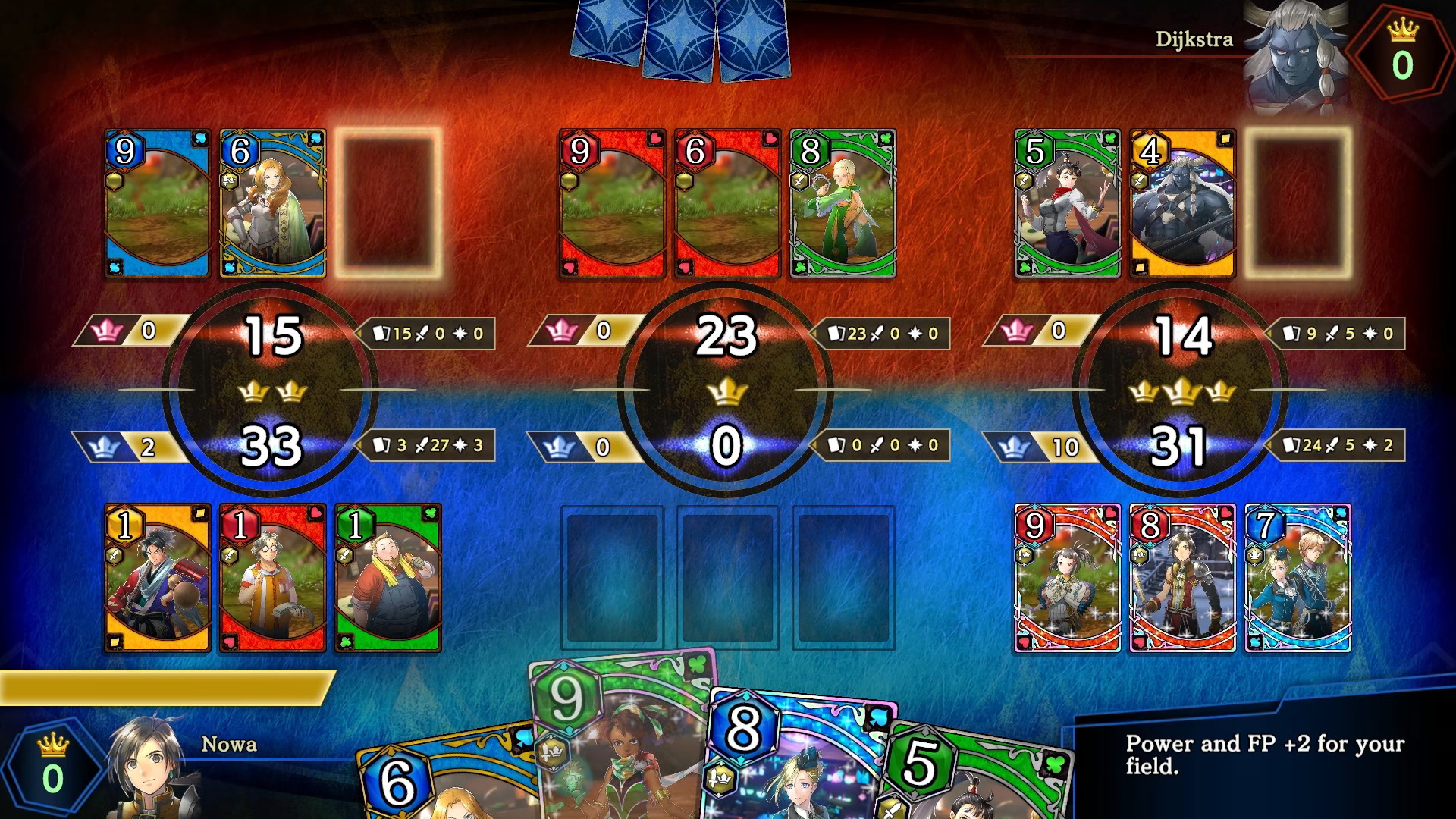
Donating these resources helps fund construction and bolsters the war effort. As the castle progresses with more work and resources invested, it will level up, unlocking even more for your heroes.
Eiyuden Chronicle: Hundred Heroes presents itself as a modern turn-based RPG with a unique blend of 3D environments and 2D sprites, reminiscent of Octopath Traveler. However, the experience never feels like a late 2000s game.
At its core, it’s a mid-to-late 90s RPG brimming with charm, discovery, and a lack of modern conveniences like fast travel. This throwback design reminds players that the best journeys often require some frustration to be truly meaningful.
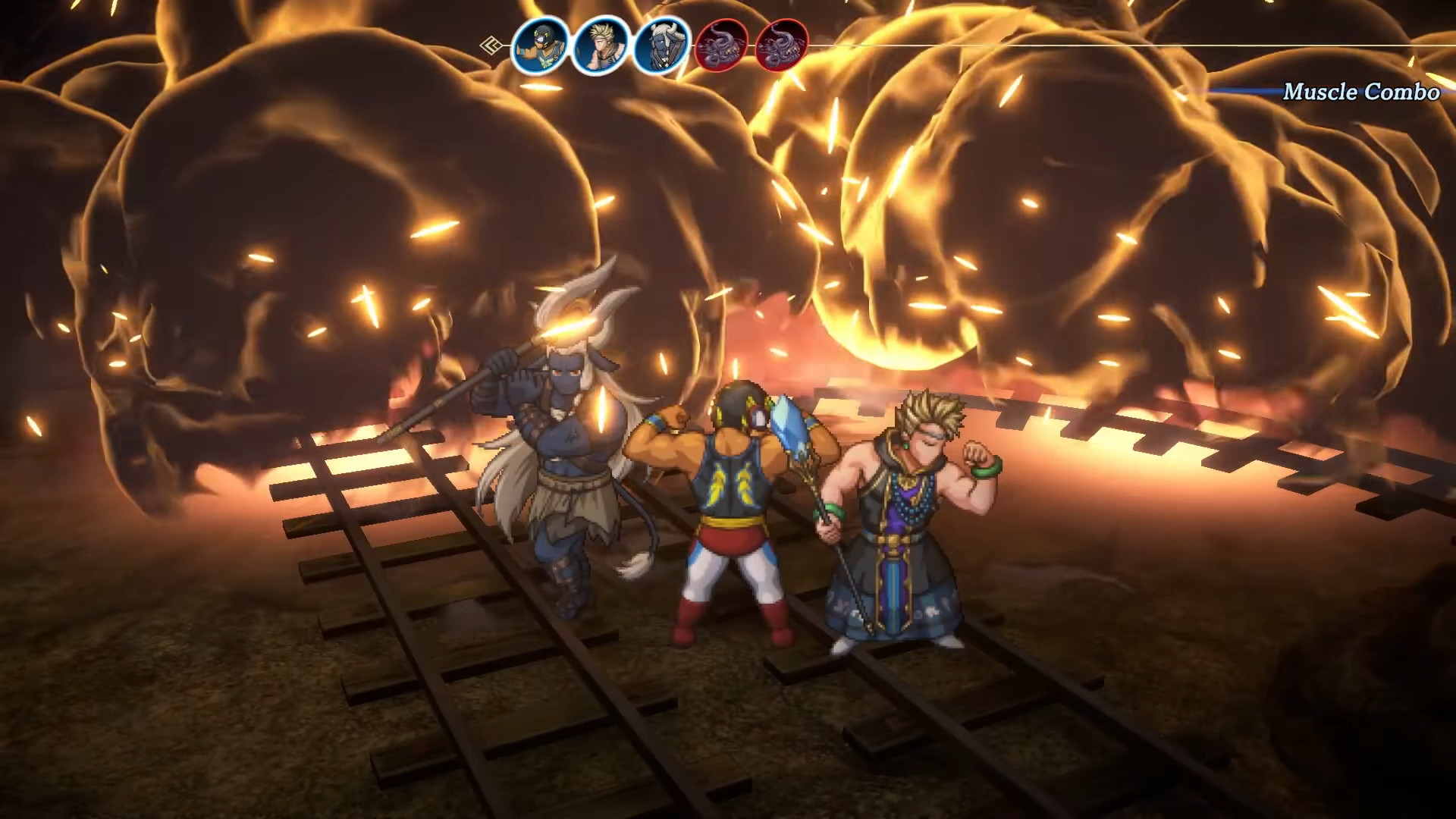
Random battles can be a bit lengthy, but a robust auto-battle system with customization options helps mitigate that. While fast travel and saving aren’t readily available at all times, save points are strategically placed, especially in dungeons. Additionally, the option to save on the world map is always accessible.
There are no glaring flaws in Eiyuden Chronicle. While some might miss the skill/proficiency system from Suikoden III, the developers embraced the philosophy of “less is more.” This game undoubtedly delivers a lot, but it does so without overwhelming the player.
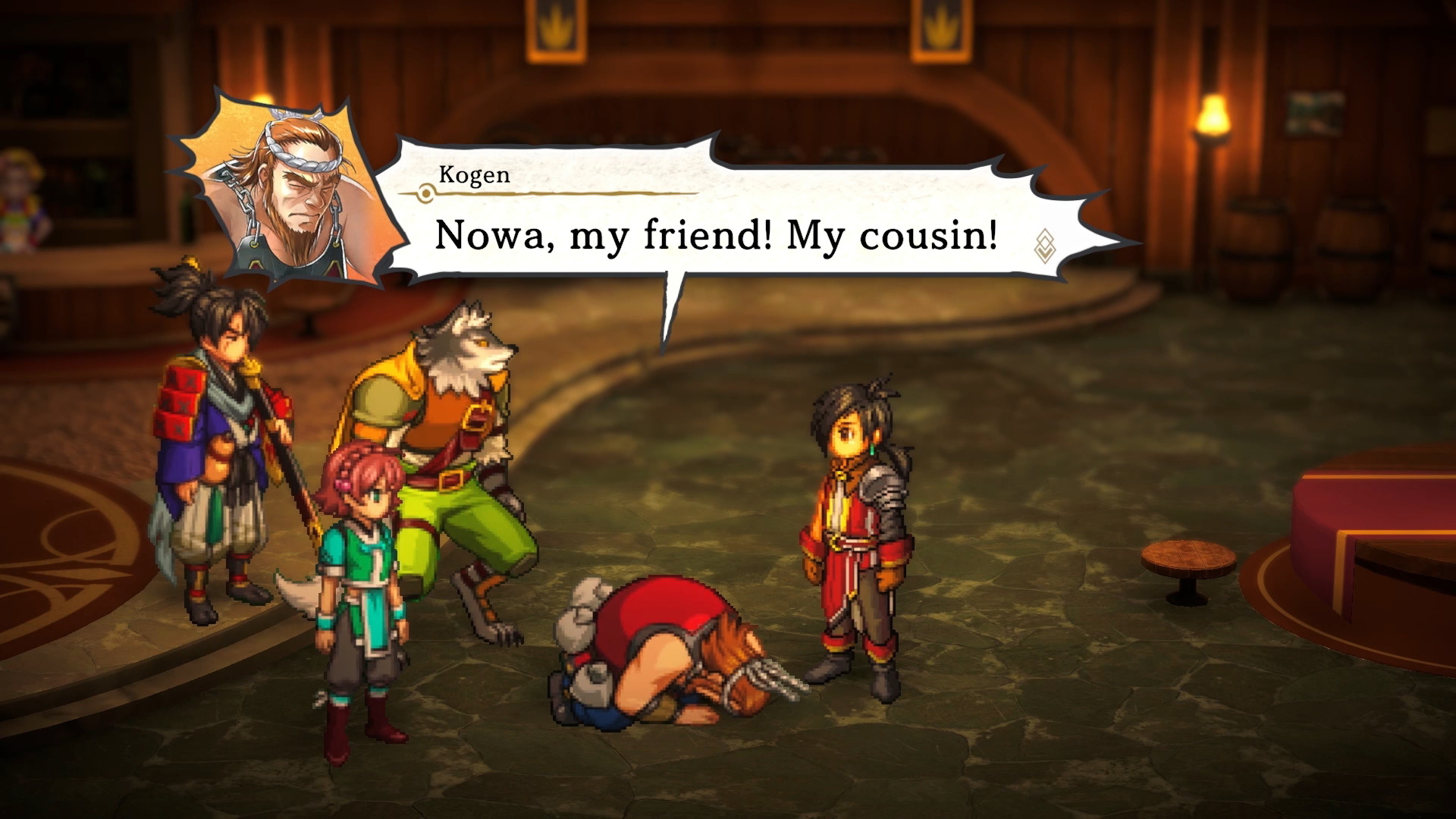
Eiyuden Chronicle: Hundred Heroes perfectly captures everything it set out to achieve. While the “love letter to JRPGs” phrase gets thrown around often, and sometimes makes me cringe despite my adoration for the genre, I have to hand it to Rabbit & Bear Studios. They made a promise and delivered in amazing ways I never thought possible – Eiyuden Chronicle: Hundred Heroes is a love letter to classic JRPGs.
Eiyuden Chronicle: Hundred Heroes was reviewed on PlayStation 5 using a code provided by 505 Games. You can find additional information about Niche Gamer’s review/ethics policy here. Eiyuden Chronicle: Hundred Heroes is now available for PC (via Steam), Nintendo Switch, Xbox One, Xbox Series X|S, PlayStation 4, and PlayStation 5.
